| 1 | African locust bean |
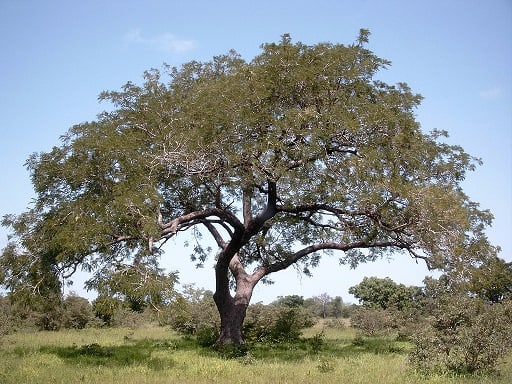
The African locust bean is actually a tree, not a bean. It’s a classic tree of grassy savannahs, and all parts are useful, with its fruits used for livestock feed, the nectar popular with bees, and the seeds ground down to a coffee substitute called Sudan coffee. The bark is recommended for snakebite in Nigeria, and in 2004, this was tested against the black-necked spitting cobra. It successfully blocked the venom’s neurotoxic effects, freeing up acetylcholine receptors in muscle cells which would normally be blocked from receiving brain signals. It also protected against the cytotoxic, cell-assaulting dangers.
The black-necked spitter lies in the centre of cobra evolutionary tree; rather than some weird offshoot, it has plenty of toxins in common with other members. Therefore, the locust bean should be beneficial against many species.
The bark was also tested against the African carpet viper, this time preventing haemorrhaging in mice. Elsewhere, the locust bean is particularly popular with Nigerians for hypertension, and has antibacterial compounds equal to the antibiotic streptomycin.
| 2 | Green chiretta |
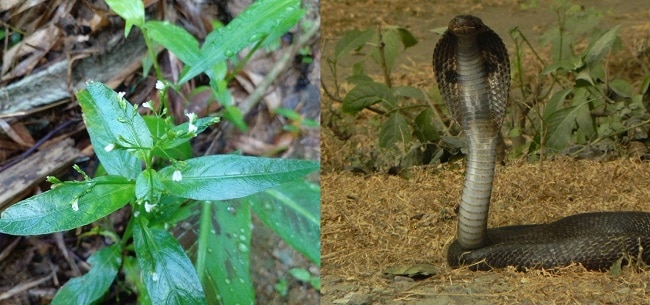
Across India, one of the favourite plants for combatting deadly Indian cobra bites is green chiretta (Andrographis paniculata). This plant appears not just in hills and plains, but the rough margins of roads and farmyards. Chiretta has been recommended by Ayurvedic medicine for centuries, and is a popular garden staple for Indian townsfolk.
Healers often combine its leaves with a second plant called Andrographis alata, while the Korku communities of central India grind the leaves into a paste and combine with mustard oil. The Kamti tribe of India swallow the seeds and allow them to combat the venom from within.
In 2011, scientists finally put this roadside plant to the test. Mice were given 3.162mg/kg of Indian cobra venom, which killed 100% of the mice. When an ethanol extract of green chiretta leaves was added, none of the mice were saved, but their average survival time was significantly increased. The mice that received distilled water survived for 29.5 minutes. With a 1g/kg dose of green chiretta, the mice survived for 3.475 hours, and with a heftier dose of 2g/kg, they survived for 8.175 hours. The scientists concluded that “A. paniculata plant extract has antivenom activity against Naja naja venom” and that “Results are comparable with the antivenom“. Indian cobras specialise in neurotoxic dangers, causing paralysis, slurred speech, and potential lung failure.
| 3 | African custard apple |
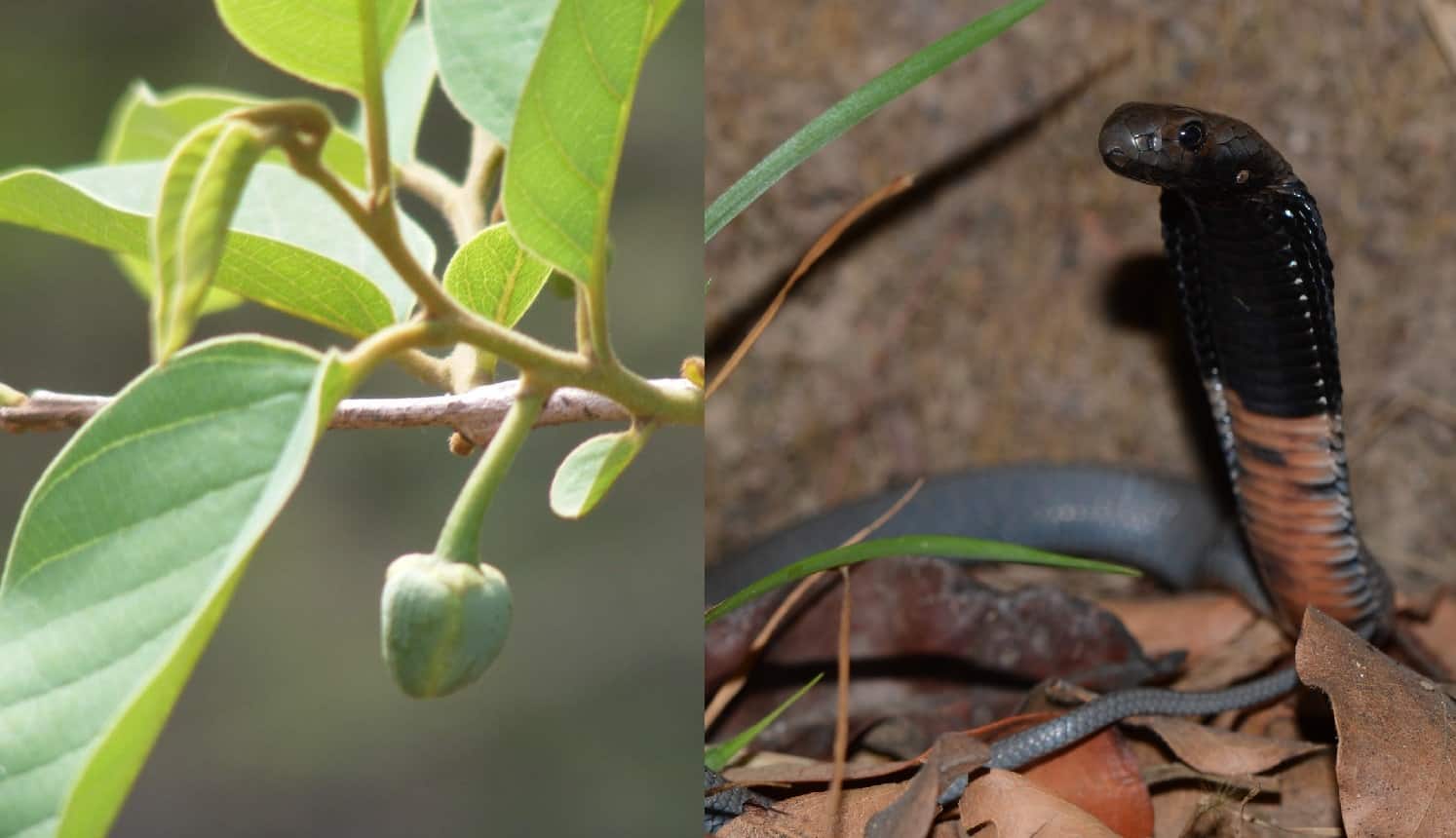
This local savannah fruit is proven against not one, but two local snakes. African custard apples are popular among the farmers and herdsmen of northern Nigeria, who are constantly forced to hold their nerve as they hear hissing from the bushes.
Firstly, the fruit was tested against the puff adder, a lazy yet venomous snake which doesn’t move for days, yet pounces explosively when it does. The roots of the fruit strongly combatted the venom’s PLA2s, a common toxin class which are behind the puff adder’s severe muscle damage (myotoxicity), which often leads to limb amputations in victims.
The next snake tested was the black spitting cobra, a widespread bogeyman in Sub-Saharan Africa. This species spits in the eyes, but its bite was tested this time. While it didn’t improve liver enzyme levels, the plant’s root bark was able to directly detoxify the venom by 16-33%. The victims’ soaring body temperatures were brought back to normality. Other uses for African custard apples among tribes include as a mouthwash to relive tooth ache, and as a galactogogue – a breast milk inducer.
| 4 | Barbatimão |
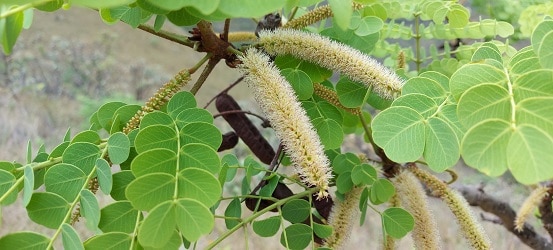
The South American bushmaster is an icon of fear in Brazil, being the longest viper in the world, and the longest venomous snake in the Western hemisphere. Its venom has only moderate toxicity, yet compensates by coming in great splashing globules of 500mg or more.
In 2010, a study compared 12 different plant extracts against this common snake, and the strongest was clearly the Barbatimão tree, AKA Stryphnodendron barbatiman. This extract was able to stop the severe haemorrhaging of the venom, lesions which eventually burst open to leak blood. In fact, the inhibition was near 100%. The extract also blocked the proteolytic qualities, when venom cleaves through protein bonds, and normalised blood coagulation.
Other plants tested included the false daisy and Canela de Velho. Many of these blocked one or two venom chaos categories, such as haemorrhaging. But the Barbatimão was the only plant to prevent all three. Stryphnodendron barbatiman grows all over in South America, and is a tree reaching several metres, with very round leaves and bean pods hanging between its branches. The study used the leaves, stems and roots.
| 5 | Ophiorrhiza mungos |

Antivenom has only been on the shelves for 75 years, yet the Indian subcontinent has been inhabited by thousands of years. Until recently, villagers relied on the respected knowledge of elders, with several plants rising above the pack to become revered. One was Ophiorrhiza mungos, a waist-high evergreen shrub with juicy green leaves.
This was an undisputed champion in treating Russell’s viper bites, perhaps the worst snake worldwide for annual deaths, and a 2014 study sought to prove the ancient knowledge. It used chick embryos, which were inundated with Russell’s viper toxins, some being pure venom, but other batches being mixed with Ophiorrhiza mungos first. The viper normally caused severe haemorrhaging of the embryos, just as it does with humans (farm workers are worst hit). But the plant extract almost completely prevented this spontaneous blood leakage.
According to the study: “the above observations confirmed that the root extract of Ophiorrhiza mungos possess potent anti snake venom neutralizing compounds”. This plant is also recommended as a cancer treatment by Ayurvedic medicine.
| 6 | Neem |
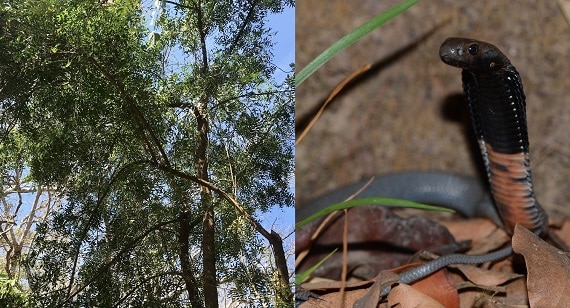
Neem is a staple in Indian Ayurvedic medicine, including for snakebite, with the desert-crawling saw-scaled viper being one species it supposedly wards off. Chewing neem each morning supposedly makes you immune to snake bite, as does brushing your teeth with the bark after breakfast. While this might be too far, a 2012 study found that neem was highly effective against black-necked spitting cobra venom in rats.
The neem didn’t benefit every symptom, as the haemorrhaging, clotting time, and bleeding time were identical to the control group. But rats given the bark had dramatically smaller necrotic legions and less haemolysis, the bursting of red blood cells. These venom symptoms were improved 3 fold compared to when using antivenom alone. Neem should never be used instead of antivenom (one boy actually died in 2016 after his healers ignored modern medicine), but could pile on the potency even further.
Indian healers (known as visha vaidyas) also use neem as an indicator of danger. They order snakebite victims to chew the bark, and if it tastes abnormal in any way, it supposedly proves that the mystery snake was venomous and grave danger is upon them.
| 7 | The guaçatonga tree |
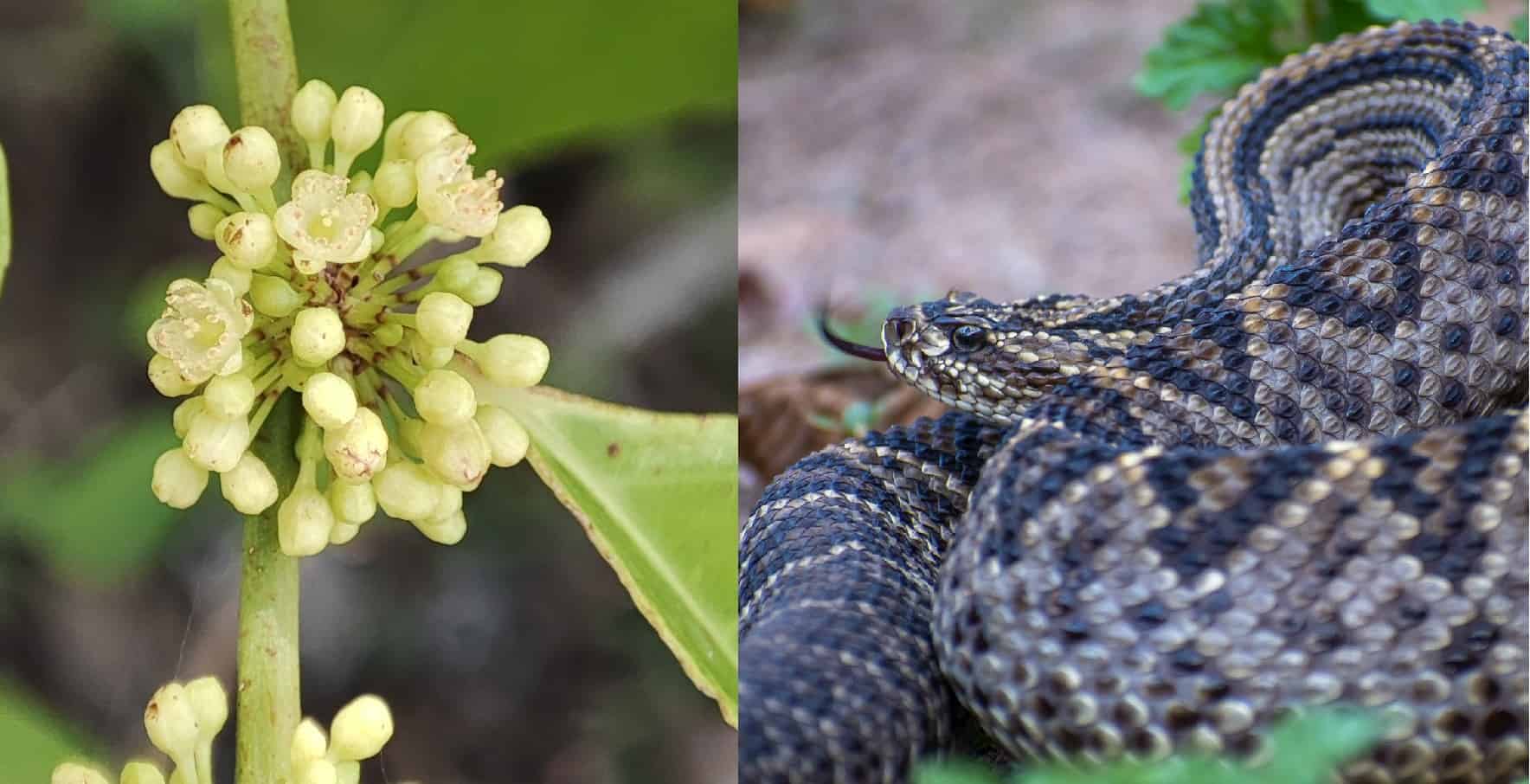
Casearia sylvestris is a Brazilian folklore tree commonly known as guaçatonga, which is usually 4-6 metres tall, occasionally up to 20. It creates an orange fruit, with the flesh being edible, but the inner seeds toxic. The tree grows all over Brazil, and is drunk as a herbal tea to combat inflammatory conditions, including the thousands of snakebites that happen in Brazil annually.
In 2007, the plant was tested against three snakes at once, all from Brazil: the jararacussu, south American rattlesnake, and rare Piraraja’s lancehead. 3 PLA2 toxins were tested from each: bothropstoxin-I, crotoxin and piraratoxin-I respectively. PLA2s can be neurotoxic, and are largely responsible for muscle damage (myotoxicity), destroying individual muscle cells and causing tissue to slough off. The study incubated the three toxins in Casearia sylvestris before injecting them into the mice, and found that the plant extract weakened all three, reducing the muscle damage by 80-95%. They even prevented the neurotoxins’ blockage of brain signal receptors in muscle cells, by 93-97%.
The good news is that this folklore remedy doesn’t have any hidden dangers. A 2015 experiment found that it was completely safe to drink over the long term.
| 8 | The Ghaf tree |
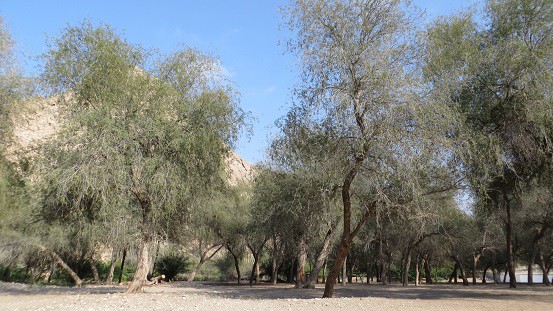
The Ghaf (Prosopis cineraria) is the national tree of the United Arab Emirates, and has a somewhat iconic image, standing humbly alone in the centre of parched landscapes, with no grass to be seen. It’s also found in India, where the leaves are used in ceremonies worshipping Shiva, and the bean pods are used in traditional dishes. For snakebite, various tribes recommend tying a paste of bark to the bitten area, allowing its magic compounds to seep in, after peeling a strip off a tree.
A 2013 study tested this bark, against the iconic Indian cobra, which combines neurotoxic dangers with local skin tissue destruction. Albino mice were tested, a logical choice given that Indian cobras eat mammals and their venom will be specialised against them.
The bark extract almost completely neutralised the lethal properties of the snake’s venom. Better, it caused no side effects of its own. The mice that survived the Indian cobra venom recovered completely. The study concluded that the Ghaf tree bark had “remarkable anti-venom potential“, containing mysterious compounds that directly neutralised the venom’s toxins. Their next plan was to identify these compounds.
| 9 | Velvetleaf (Cissampelos pareira) |
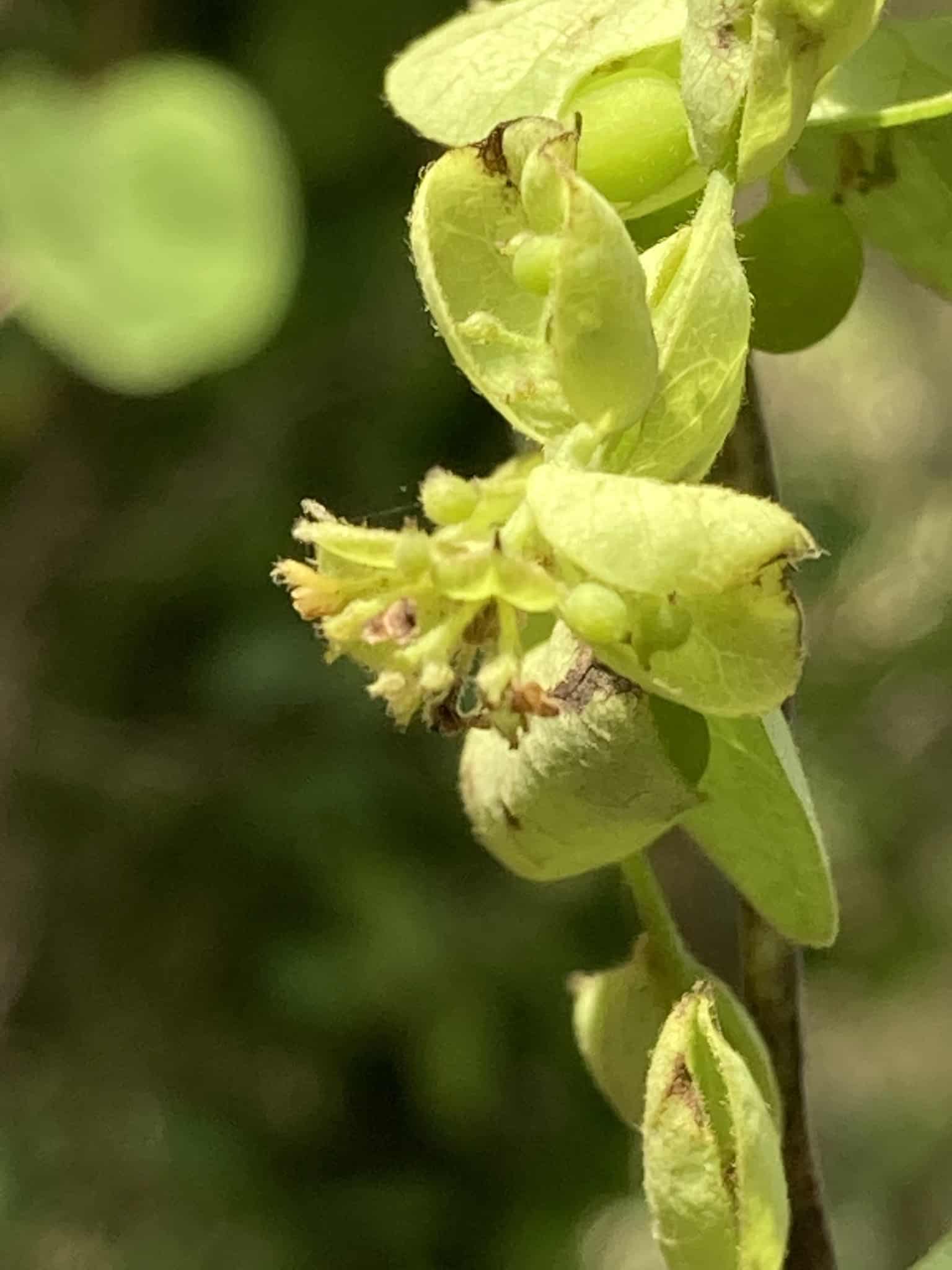
A leafy climbing plant found in forests and shrubbed hillsides, most heavily concentrated in India. This remedy must have some reality behind it, as it appears for snakebite in various Indian communities. The tribes of Purulia, West Bengal, recommend mixing it with 10 gams of long pepper and consuming as a paste for 5 days. The Korku and Gond communities of central India recommend pounding the roots, and the people of Margallah Hills near Islamabad have also realised its snakebite powers.
These were confirmed by science for good in 2018, when velvetleaf was tested against Bothrops dioporus venom. This snake actually lives in Brazil, but has a large toxin crossover with other pitvipers around the world. The plant particularly combatted the local tissue damage from the snake venom, which can spiral into necrosis and amputation if left unchecked.
Flavanol antioxidants within the velvetleaf were deemed responsible, including quercetin 3-O-sophoroside and galangin-7-glucoside. The study was performed on living mice, as well as isolated venom in a lab. Velvetleaf is also recommended for chest pain in ancient Indian medicine.
| 10 | Bellyache bush |
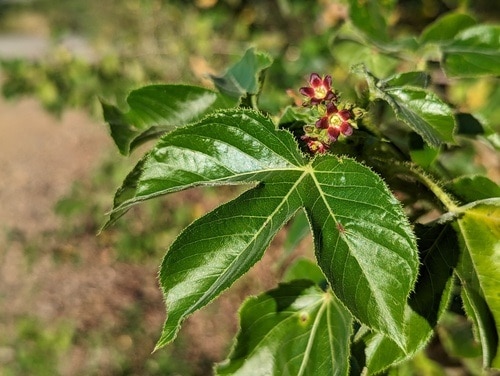
The bellyache bush (Jatropha gossypiifolia) has been introduced in Australia, but is native to Mexico, southwards through Brazil. It has a seemingly endless list of folk uses, including bathing wounds, treating injured dogs, and for inducing abortion, as recommended by Benjamin Franklin. Halting the ticking clock of snakebite death is one more usage.
In 2016, the plant was tested against the venomous Caatinga lancehead (Bothrops erythromelas), and compared directly to the main Brazilian pitviper antivenom. Bothrops erythromelas is a much rarer species, and isn’t included in the 5 pitvipers used to make the antivenom (the jararaca and common lancehead being two), which was why scientists were considering alternative remedies.
When injected into mice before the venom, both the antivenom and bellyache bush extract successfully prevented haemorrhaging and edema (swelling). But the antivenom was far weaker than given to mice after the venom was already injected, perhaps mimicking the real world scenario of a banana picker staggering to a village medical hut. Meanwhile, the bellyache bush was just as effective post-bite, still treating the haemorrhaging and swelling with aplomb. Before this study, the plant had already performed well in a study against the far more common Bothrops jararara.
